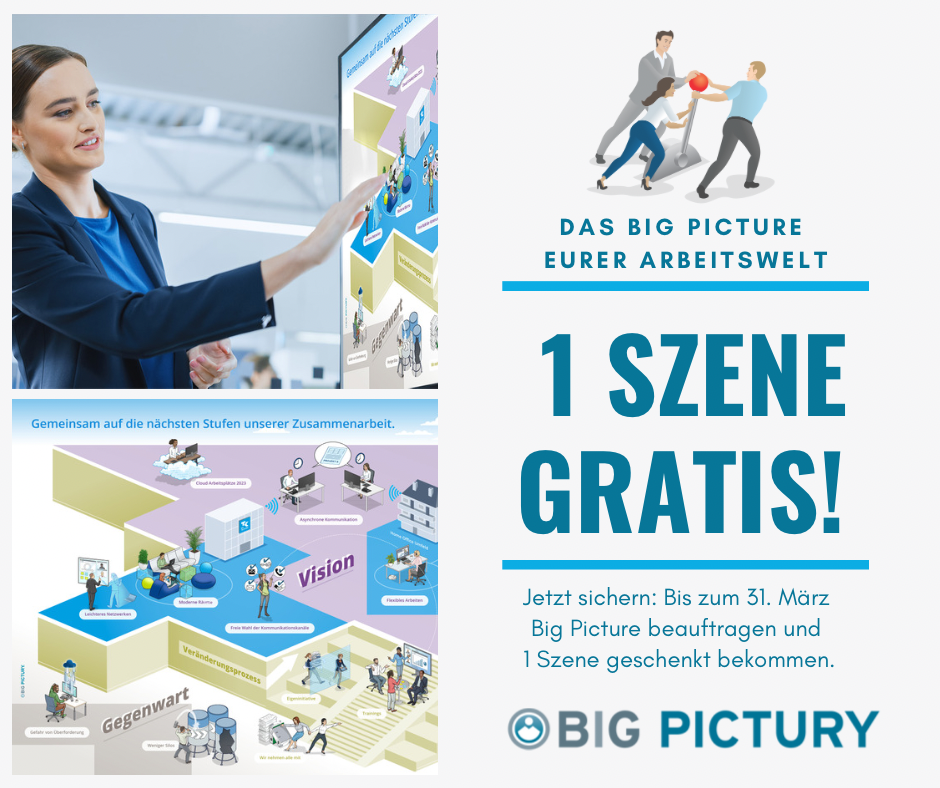It’s an instantly recognizable silhouette for anyone who has passed through the nexus intersecting the southern and eastern parts of Hamburg’s inner city. On its completion, the wide arch of Berliner Bogen, a building designed by Bothe, Richter and Teherani, instantly became the visual trademark of the Berliner Tor area. Its form is echoed thirty kilometers away in the twin arches of the headquarters of the Tobias Grau company. The new buildings were designed in 1996, just as the company’s previous offices in Hamburg’s Ottensen area were “at the limits of their capacity,” as Franziska Grau remembers. Today the company employs 110 people at its offices in Rellingen, near Hamburg. A generously proportioned cafeteria forms the communicative hub at Tobias Grau. Breakfast is provided every day and the entire staff lunch together on Wednesdays.
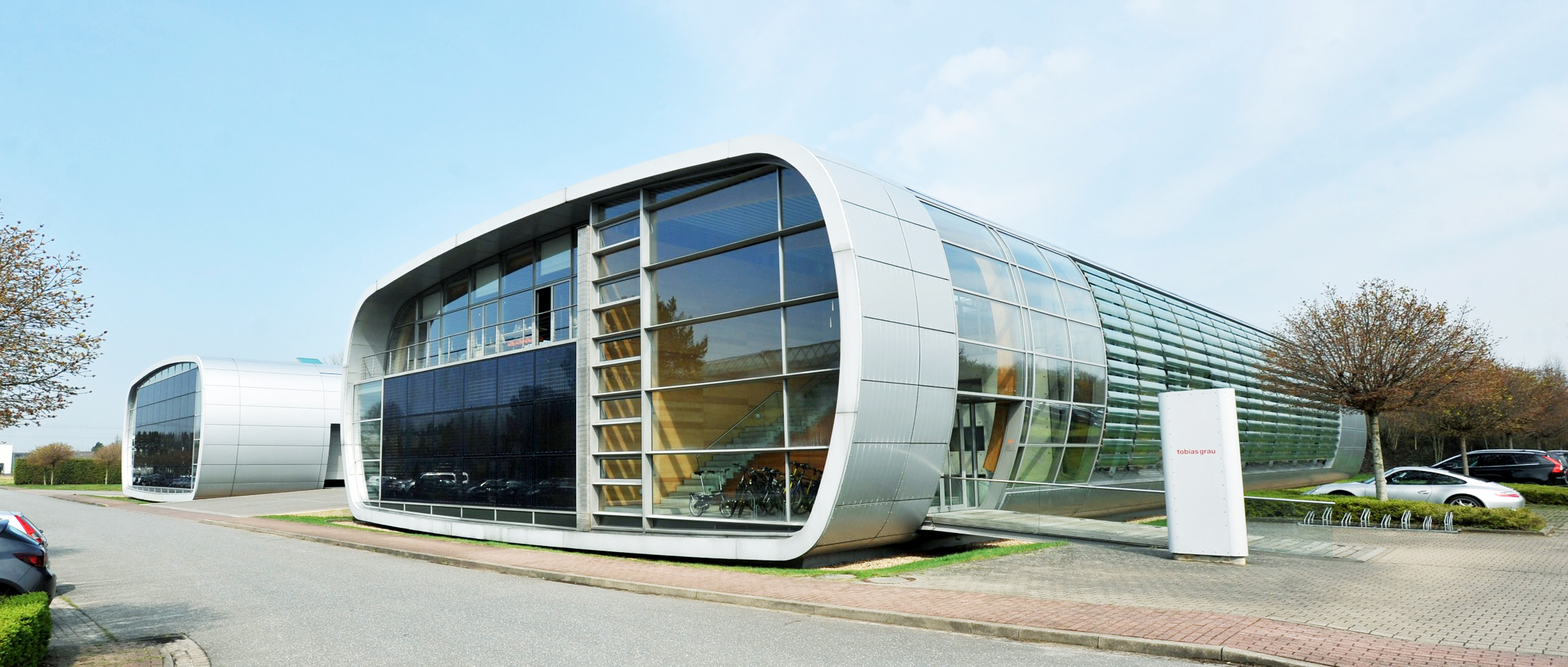
For decades, Tobias Grau has been one of the most resonant addresses when it comes to innovative and aesthetically pleasing luminaires. Franziska and Tobias Grau, what does good office lighting involve?
Tobias Grau:The first imperative, of course, is to fulfill the statutory norms and regulations. The nominal illuminance at desk level needs to be around 500 Lux. Fundamentally, lighting is an important tool for working in any office. It’s an invisible part of the overall design. It’s not more or less than that. In our view, lights should be functional, fit in and not get in the way. The workspace should be well lit and at the same time the design should avoid dazzling the people that work there. Ideally, the light source itself is dark while the lighted area, the workspace, is well lit. If you’re not dazzled by the light, if you don’t have think about the lighting and you can take it for granted, then the design has already achieved a great deal. One of our bestselling lights is our XT-A office lamp series, which incorporates our patented anti-dazzle technology. I think it’s popular because it’s a natural workspace companion that’s simply there, in a pleasant way. It’s an unobtrusive “light servant”.
Franziska Grau:We’re aiming for an effect that’s the opposite of what an actor experiences on stage. The stage is perfectly lit but often the actor can’t see the audience because they’re dazzled by the lights.
Tobias Grau: And that’s fatal for a productive work atmosphere. That’s why our lights minimize dazzle. The one cardinal mistake of office lighting design is to use lighting that’s too high powered. We often come out on top against our competitors because our lights have the lowest candela values, meaning they have the lowest light intensity per unit area on the lamp head. The lighting power of our products only becomes visible when you put a desk underneath it.
Franziska Grau: In the past we’ve had problems during product presentations because of that effect, which is in fact a measure of design quality. Like when presentations are held in a room with black carpeting, for example. Our competitors’ products were very bright at the top because they had enormous light density at the head end but a far lower luminosity. Our lights only illuminate the surface they’re intended for.
When developing a design for a certain space, to what extent are you led by your own convictions as a designer and to what extent by the specific characteristics of that space?
Tobias Grau: The two factors are interrelated. On the one hand, of course, our aim is to provide the most pleasant, healthy and productive working conditions for the people using our lights and lighting systems. Obviously, that requires us to channel the expertise we’ve gathered over the years into our work as much as possible. But the physical characteristics of the space always form the basis of our planning when submitting bids or executing orders. Otherwise our design work would happen in a vacuum, which of course it doesn’t. We tailor our lighting to the specific needs of our customers every time. A while ago we had a client who had selected Vitra room dividers that were in a slightly different tone of white than our lights. So we changed the light color to suit that situation.
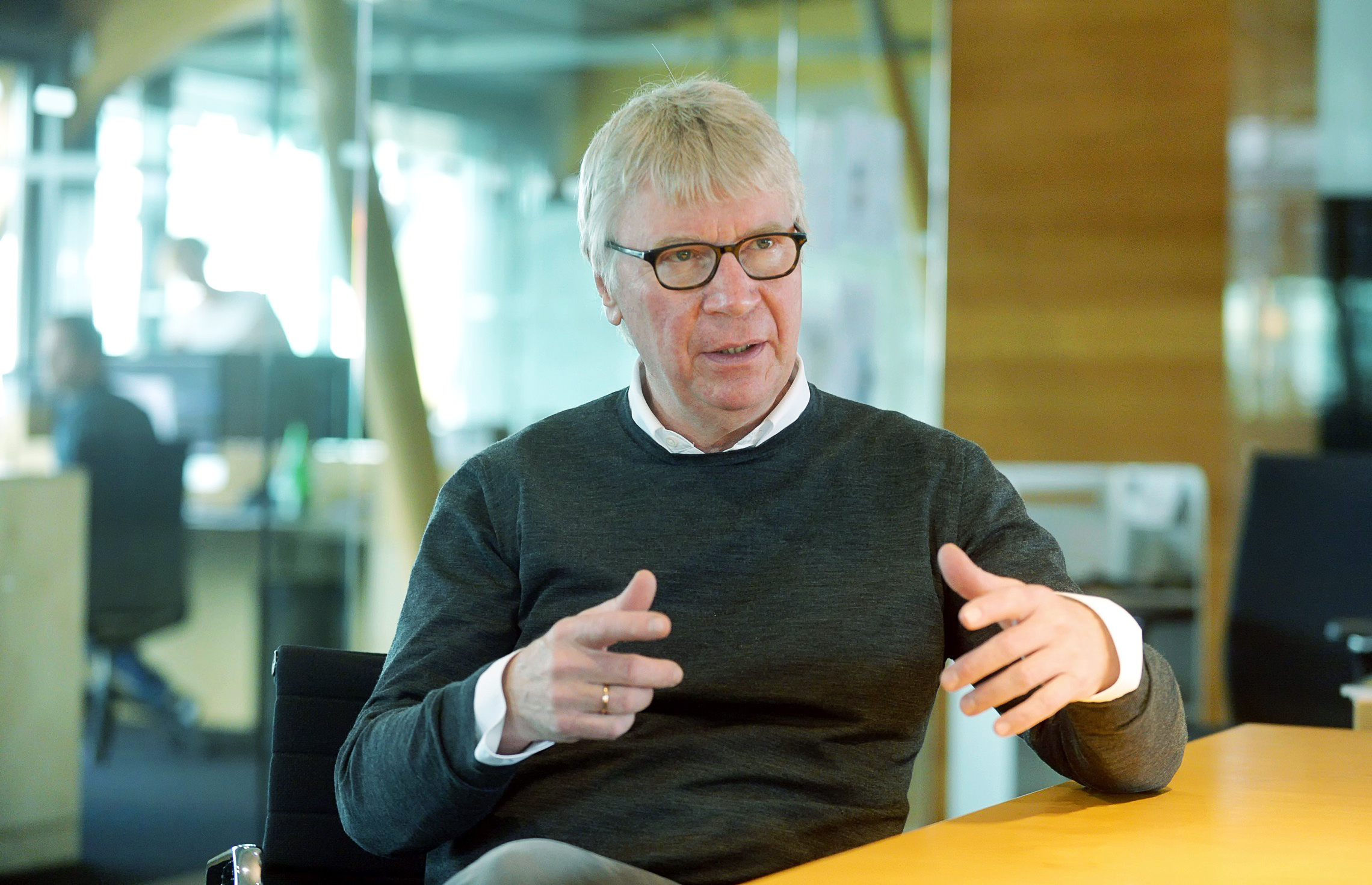
Franziska Grau:We react to the wishes of contractors and planners when considering lighting control aspects and how our products should behave. We incorporate some of those requests into our mass-produced products. If we particularly like a certain effect, we add it to the suite of control functions.
Tobias Grau: Sometimes, of course, we also develop a completely new light for a certain customer. One client needed a cross between a desk lamp and a floor lamp. That kind of product needs to be lower than a standard floor lamp, otherwise you get a diffuse street lamp effect. But if the light is lower, then you need to avoid dazzle upwards, or taller people will look down into the light. The third challenge was the shaft. If this light had had a straight shaft, it would have looked like a street light. So, I designed a tilted shaft to cast the light onto the middle of the desk. That kind of development process takes months.
Franziska Grau: Other examples for our project-oriented work include successful bids for contracts from the European Council and the Spiegel publishing company.
Tobias Grau: When Spiegel built its new office in Hamburg’s Hafen City area, there was a clear directive to adhere to gold standards that had been developed for sustainable and ecologically responsible construction. For us, that meant reducing power usage to a minimum. Also, Spiegel said it wanted only floor lamps and no ceiling lighting. Back then, conventional floor lamps couldn’t illuminate the workspace in an optimal way because the lamp head form was unfavorable for good light spread characteristics. For that project I designed a long, suspended light that I set onto a base, turning it into a floor lamp. It was a simple idea that won us the contract to provide lighting for a floor space housing 2000 employees.
Franziska Grau: That lamp carried the DNA for our current range of best-selling products. It was the first floor lamp with an elongated head.
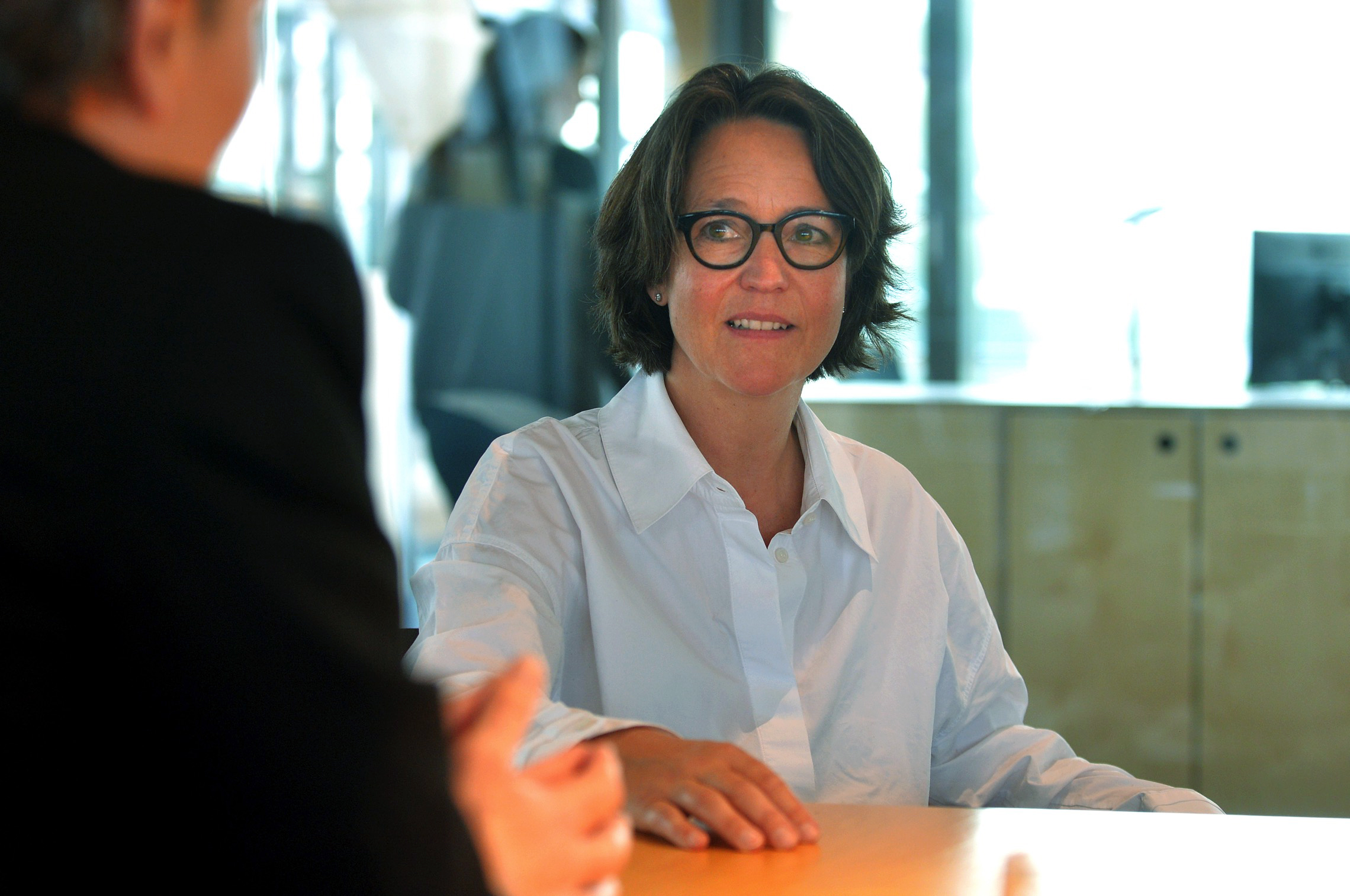
What do you see as the future trends in office lighting?
Tobias Grau: LED technology is advancing very quickly. LEDs are now almost microscopically small and their light is wonderfully scalable. That widens the spectrum of possibilities. For us, the move to LEDs was initially difficult because the light they provided wasn’t up to our standards.
That has changed radically. Our sales director – who’s seen a few things in his time and can temper his enthusiasm accordingly – came in recently and was very enthusiastic about our new shade luminaire called Sixteen, which will be available in the fall. “I got rid of all the filament lights in my house,” he said. “The new light is so much better than the old,” he told us. The light combines several LEDs for a warm, natural and candle-like effect.
Franziska Grau: The red parts of the spectrum light up longer and create the so-called lightbulb effect. We call this technology Warmdim and it’s featured in many of our products.
What does “Tunable White” mean?
Tobias Grau: This is an important trend. Tunable White is offered on some of our office lighting ranges. You can set the light to produce either a warmer or colder light, either via manual control or using presets that are selected using sensors.
How important do you think Human Centric Lighting will be for offices in the future?
Tobias Grau: This development is still at an early stage and it’s difficult to predict where it will lead us. But the possibilities are enormous. At the moment, the term Human Centric Lighting just means that the color changes automatically throughout the day. This is based on research showing that depending on the time of day, the human body prefers light that is either warmer or colder. Time will tell if Human Centric Lighting will become widely accepted. Our office product ranges XTS and XTA provide this feature.
Franziska Grau: When is indirect light used and how is it controlled? When does a light switch itself off? If someone’s still working alone at the back of the office, should the light at the front be switched off? Our patented “Connect” control system is tuned to provide the right answers to these questions.
Tobias Grau: Products have become a lot more intelligent in the last few years. We’ve seen huge developments in systems that assist users. We are developing very complex solutions for individualized lighting needs in open plan offices, reception areas, conference rooms and cafeterias. The charged relationship between central and individual modes of control plays an important role here.
Franziska Grau, to what extent are the innovations we’ve been talking about impacting the workspaces at your two arch-shaped offices in which you and your 110 employees work?
Well, I think we need to stay pragmatic about this. We spoke earlier about the specific needs of our clients and how we focus on them. And it’s the same when we are our own client. With their open architecture, our arches were built in 1998 and 2001, so they’ve already seen a few years pass by. But for us it’s not always about implementing the latest craze. Elements like modern acoustic room dividers are something we’re looking at, too. In terms of lighting, we use modern LED technology, of course. But aside from that, you can’t always do everything at once. We implement changes in a gradual, considered way.
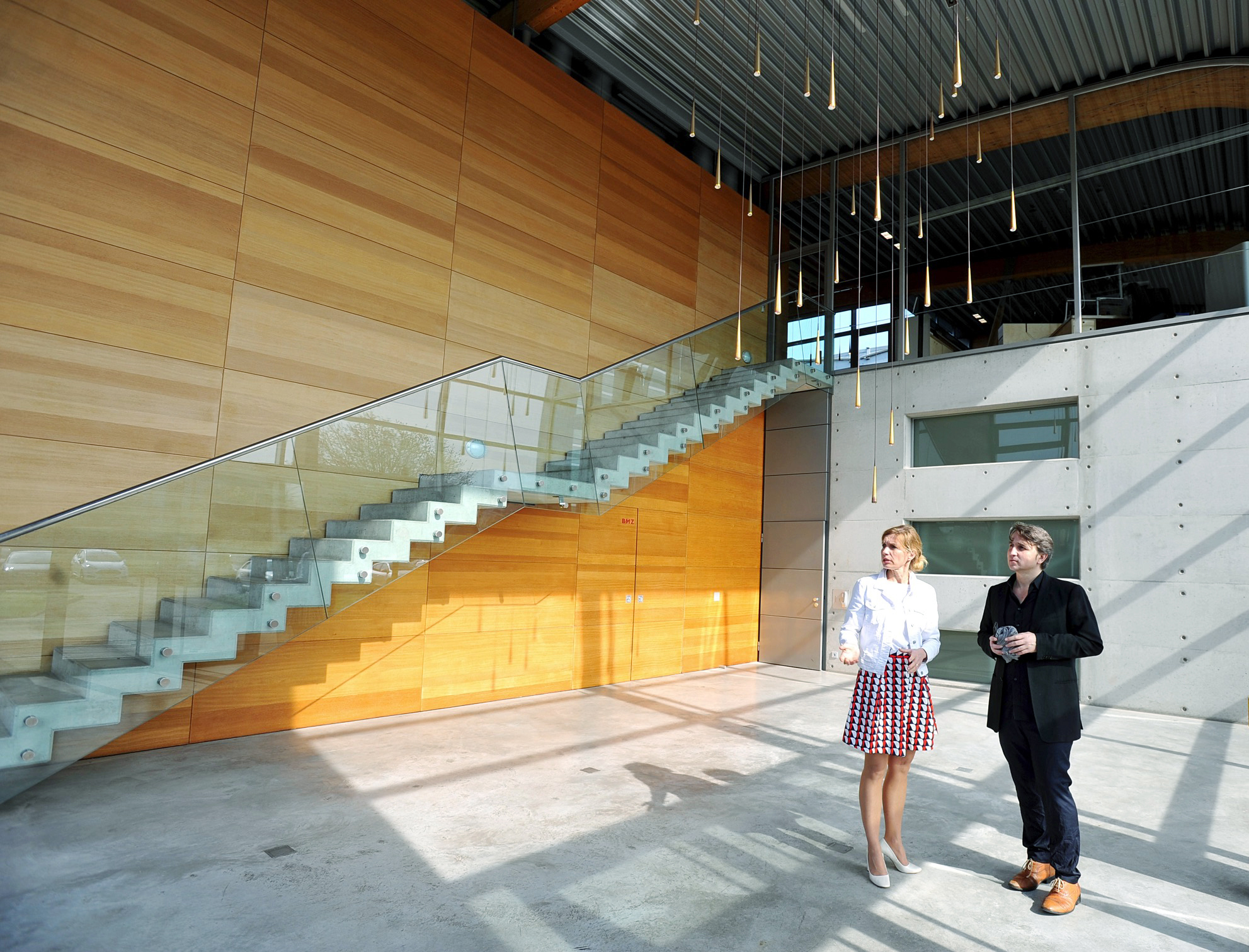
Mr. Grau, you have received many awards and prizes both for coherent lighting design and excellence in design form. Do you see yourself more as a designer or as an artist?
Tobias Grau: Definitely as a designer. Our products follow the adage that form follows function. Fundamentally, our lights have to fulfill a certain purpose. Sometimes my work is informed by a more emotional approach, at others by a more analytical one. When designing office lighting, it’s important to combine technology with logic in a purposeful way. But that process has to find the best possible form. The form is indescribably important, not only in a decorative sense but also because our solutions need to be aesthetically coherent.
One last question about lighting. This one is a bit more mundane: What lighting do you use at home in bed of an evening?
Franziska Grau: At home, my constant companion is our Parrot floor lamp model, which was designed by our two eldest sons. It’s lightweight and doesn’t need any cables because it uses an integrated battery that can go for days without needing to be recharged. I find that sense of mobility very pleasant and practical.
Franziska and Tobias Grau, thank you very much for taking the time to talk to us.
Author: Jonas Demel, Photographer: Michael Schwartz
© Office Inspiration
For the commercial re-publishing please contact office@officeinspiration.com

